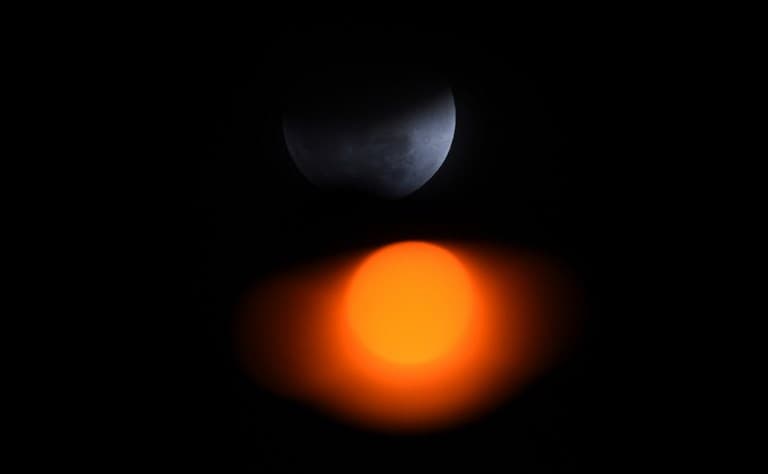Eschenberg Observatory in Switzerland to open its doors for Friday's total eclipse of the moon

The Swiss space observatory in Eschenberg will offer a free, guided tour on Friday night in what is expected to be the longest total eclipse of the moon for the next 100 years.
The eclipse, in which the moon will be completely hidden, is expected to last from 21.30 until 23.14 – 104 minutes.
While the eclipse will obscure the moon "it will still be recognizable in a faint, deep red shimmer," said the Eschenberg Observatory in a statement. These shades of colour are caused by sunbeams filtered from the earth's atmosphere that effectively provide lighting for the once in a lifetime event.
The unusual length of the central eclipse is due to the moon passing through the centre of the earth's shadow.
The event at the Eschenberg Observatory in Winterthur, north of the city of Zurich, will also afford visitors the chance to get a rare glimpse of the surface of Mars, travelling closer than normal to the earth, in more detail via telescopes. The event starts at 20.30 on Friday July 27th and is free. No registration is necessary.
Additional tours to watch falling stars are also scheduled for August 11th and 12th at the observatory. To date, the observatory in Eschenberg has made 15,000 measurements on near-Earth asteroids, making it a world-leader in the field of astronomy.
The observatory, led by astronomer Markus Griesser, has discovered 300 new near-Earth small planets, ten alone this year, according to a statement by the astronomy research centre. Many of the discovered planets were given Swiss names: Winterthur, Helvetia or Wiesendangen, for example.
The next total eclipse of the moon is expected to be in January 2019, although such a long total eclipse is not expected to occur again until the year 2123, reports Swiss news portal 20 Minutes.
For those who can't make it to the observatory, Griesser suggests watching the eclipse from an elevated point with a wide-spanning view towards the southeast, where the moon is expected to rise from.
READ MORE: Bernese telescope starts journey into space with cargo of children’s artworks
Comments
See Also
The eclipse, in which the moon will be completely hidden, is expected to last from 21.30 until 23.14 – 104 minutes.
While the eclipse will obscure the moon "it will still be recognizable in a faint, deep red shimmer," said the Eschenberg Observatory in a statement. These shades of colour are caused by sunbeams filtered from the earth's atmosphere that effectively provide lighting for the once in a lifetime event.
The unusual length of the central eclipse is due to the moon passing through the centre of the earth's shadow.
The event at the Eschenberg Observatory in Winterthur, north of the city of Zurich, will also afford visitors the chance to get a rare glimpse of the surface of Mars, travelling closer than normal to the earth, in more detail via telescopes. The event starts at 20.30 on Friday July 27th and is free. No registration is necessary.
Additional tours to watch falling stars are also scheduled for August 11th and 12th at the observatory. To date, the observatory in Eschenberg has made 15,000 measurements on near-Earth asteroids, making it a world-leader in the field of astronomy.
The observatory, led by astronomer Markus Griesser, has discovered 300 new near-Earth small planets, ten alone this year, according to a statement by the astronomy research centre. Many of the discovered planets were given Swiss names: Winterthur, Helvetia or Wiesendangen, for example.
The next total eclipse of the moon is expected to be in January 2019, although such a long total eclipse is not expected to occur again until the year 2123, reports Swiss news portal 20 Minutes.
For those who can't make it to the observatory, Griesser suggests watching the eclipse from an elevated point with a wide-spanning view towards the southeast, where the moon is expected to rise from.
READ MORE: Bernese telescope starts journey into space with cargo of children’s artworks
Join the conversation in our comments section below. Share your own views and experience and if you have a question or suggestion for our journalists then email us at [email protected].
Please keep comments civil, constructive and on topic – and make sure to read our terms of use before getting involved.
Please log in here to leave a comment.